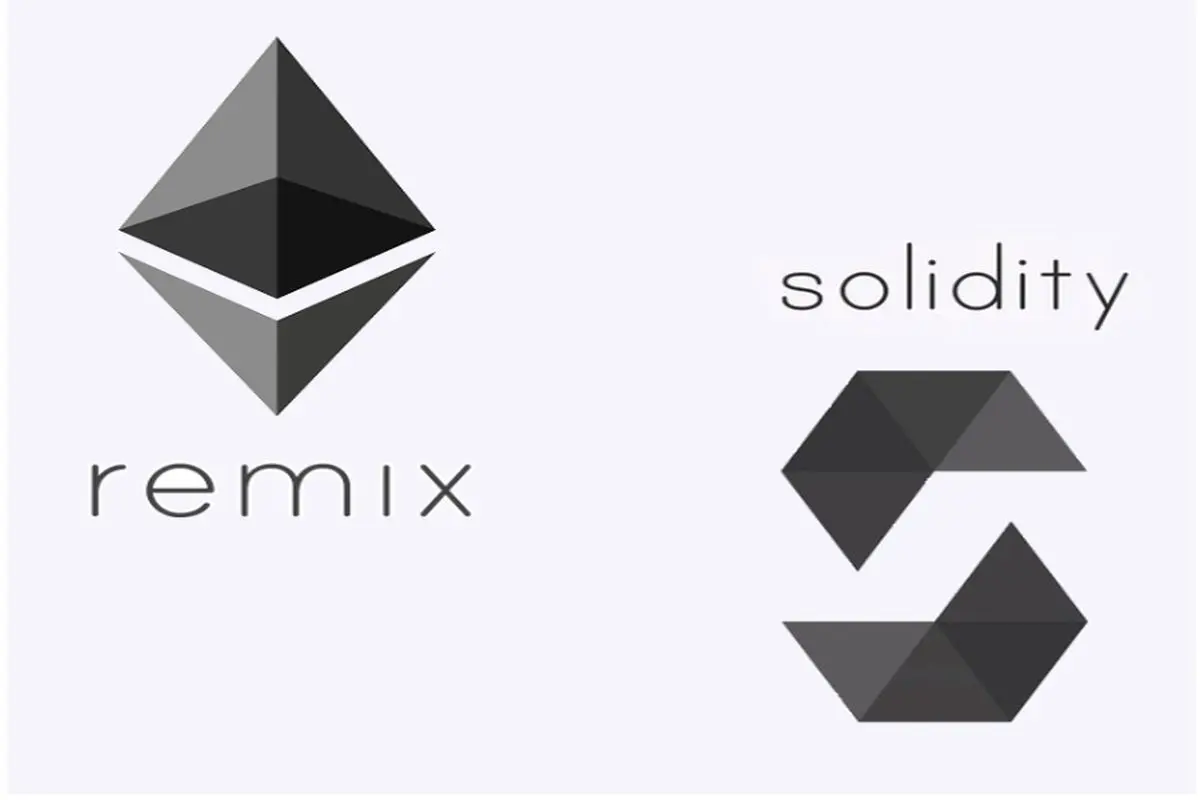Solidity is described as the programming language for writing Smart Contracts. It is precisely compiled to bytecode executable on the Ethereum Virtual Machine (EVM). Solidity underpins libraries, inheritance, and complex user-defined types, among many other features that make it an excellent choice for the development of smart contract applications.
Here, we will develop a sample smart contract which we will deploy to the Ethereum blockchain using Remix. The Remix is an online compiler, IDE, and debugger for Solidity that resembles a JavaScript language for writing Ethereum smart contracts.
Related: The Future of Online Gambling -Ethereum Smart Contracts
Ethereum Overview
Ethereum is an open-source, blockchain-based, public, distributed computing platform that features a smart contract functionality. It has its in-house crypto known as Ether which is used for the payments of transaction fees and other services that are offered on the network.
What is typically known as computer programs are called smart contracts in Ethereum. Unveiled in 2015, Ethereum has gained a lot of popularity in the past five years. It is a permissionless, public blockchain meaning that anybody can use it. But, for every write operation, you have to pay gas fees in form of Ether.
Ethereum offers a decentralized virtual machine that can execute different scripts using an international network of public nodes. Notably, the Ethereum Virtual Machine (EVM) executes scripts utilizing an international network of public nodes to store and run smart contracts programs.
What Are Smart Contracts?
Smart contracts have become the new way of trade on the internet. They operate similarly to traditional contracts, but they are executed automatically using a computer without any human intervention.
Furthermore, it is an independent Solidity script that is compiled into JSON and uploaded straight to a particular blockchain address. It is possible to execute implemented smart contracts accordingly to a specific address by inputting accurate data coupled with Ethereum to call the deployed and compiled Solidity function. It operates in the same way as we can contact a URL endpoint of a RESTful API to execute some functionality via an HttpRequest.
By design, the smart contracts are distributed to the decentralized database for a price that is comparable to the storage size of the code that encloses them. It can also be characterized as a set of code that is stored in the blockchain network that defines the needs that all the contract participants have to agree to.
Nick Szabo first introduced a brilliant idea behind smart contracts in 1994, and since then they have been used on a massive scale. They are normally programmed in Solidity, which is a high-level programming language that is well-designed to develop smart contracts and decentralized applications available on the Ethereum platform.
Smart contracts are just programs that thrive on the blockchain. They can be utilized by making external method calls or calls originating from the other smart contracts. These programs execute in the Ethereum Virtual Machine. They help in reducing fraudulent losses, malicious exceptions, and the need for a trusted intermediary when effectively written and audited.
Related: Alex Shevchenko- Aurora Labs CEO talks to us about NEAR’s Ethereum Virtual Machine
Fundamentals Of Creating Smart Contract Using Solidity
Users need to first install the Solidity Compiler and IDE. However, the IDE is not strictly important, though it does writing and makes debugging smart contracts easier.
The second step is to develop a library for the contract code. This library is required to contain all of the contract code that a user wants to share between contracts and across projects. This enables the users to avoid cases of repetition and also helps in keeping track of what one has written before.
Thirdly, you need to install and set up a metamask. MetaMask is a crypto wallet and an Ethereum browser in one. It enables you to communicate with smart contracts and decentralized applications (dApps) through the web without having to download any application. All you need to do is install MetaMask as a Chrome extension, create a wallet, and eventually send Ether.
Although MetaMask is currently just accessible for the Google Chrome browser, it might become available for Firefox in the future. You are allowed to either import an existing wallet or develop a new wallet after downloading and installing it as a Chrome extension. To deploy the Ethereum smart contracts on the network, you will need to have some ethers in your Ethereum wallet.
How To Create Ethereum Smart Contract With Solidity
Use Remix Editor
The Remix is a browser-based IDE that lets you create Ethereum smart contracts using Solidity. It also offers a browser-based Remix IDE and Solidity compiler that can readily compile and deploy your contract.
This Remix IDE comes with a user-friendly interface that lets developers debug, create, deploy, and even interact with smart contracts. It provides an extensive set of tools and libraries that enable developers to write and compile their code while remaining in a single place.
Furthermore, Remix is designed with some great features like autocomplete, Analysis of static data, Highlighting syntax and errors, Debugger built-in, Web3 objects injected into functions, and Environment for testing and deployment. All these features and functionalities make it easy for developers to write an Ethereum smart contract with Solidity.
The first step is the Remix IDE on your browser which is available here.
After setting it up, you can start writing the smart contract by clicking “Create New File” which is found in the top left corner of Remix’s window, and selecting.
Create A “MyContract.sol” File In The Contracts Directory
Note that .sol is the file extension for the smart solidity contracts. MyContract.sol is the file’s name where the contract will be saved eventually.
Write This code In The MyContract.sol File:
| // SPDX-License-Identifier: MIT
pragma solidity >=0.4.0 <0.7.0; contract MyContract { string storedData; function set(string memory x) public { storedData = x; } function get() public view returns (string memory) { return storedData; } } |
The Software Package Data Exchange (SPDX) identifier is mostly utilized to designate the license under which the Solidity file will be published ‘/ SPDX-License-Identifier. It is majorly recommended that users can integrate it into the code, and in case they do not, the compiler gives out an error.
Secondly, in this case, the pragma line was used. The “pragma” line which is found at the top of the Solidity source file is utilized in the setting of the compiler edition. The primary purpose of the Pragma line is to inform the compiler about the version that you are dealing with.
That is how you write an Ethereum smart contract. Notably, this is just a basic one for purposes of education. But, it is adequate to give you a great idea of how to create a smart contract.
Compile The Smart Contract
We can now compile the code as mentioned earlier by clicking “Compile” on the right side of the screen. This move produces a new hexadecimal string within the “Output” tab.
Deploy The Ethereum Smart Contracts
Here is how to deploy smart contracts.
First, you need to switch to the main Ethereum network at MetaMask to activate the smart contract. Add some ethers into the account and then use Remix to deploy the smart contract. After the smart contract is successfully deployed, select a smart contract for authentication.
Now you need to validate the smart contract by clicking “verify the contract” that is found on this page. Copy and paste the intelligent contract code from the page into Etherscan. It is advisable to use the same compiler version that you were using for Remix to compile your code.
Proceed to choose ‘optimization’ from the drop-down menu. In case you had chosen optimization during Remix, click Yes; otherwise, choose No. Validate by clicking the button. In the case that no issues come up, it takes some minutes for the smart contract to go live.
In this case, we have learnt how to write a simple and efficient Ethereum smart contract using Solidity and Remix editor.
Related: The Unconventional Guide to Ethereum
What Are The Benefits Of Smart Contracts?
Smart contracts are self-executing contracts that come with the terms of the agreement between the seller and buyer being directly written into lines of code.
Each time a transaction is executed, all its details are recorded as a “block” on a “public ledger” known as the “Blockchain”. Blockchain technology and networks are growing continuously and are shared with all computers with a Bitcoin wallet, which is available for everyone to download for free.
Smart contracts offer benefits in several areas:
- Transparency – all information related to the executed transactions is publicly stored on the blockchain, which mitigates incidents of fraud and makes it hard to change the record.
- Speed – smart contracts are designed to execute transactions automatically and securely without the interference of any third parties.
- Security – Ethereum utilizes cryptography to store all data securely, making it challenging for anyone to tamper with the records.
- Cost – smart contracts mitigate and in some cases eliminate third-party costs by offering users an automated method of trading assets or sharing information.
The Takeaway
Solidity provides straightforward and easy-to-use ways of writing Ethereum Smart contracts.











